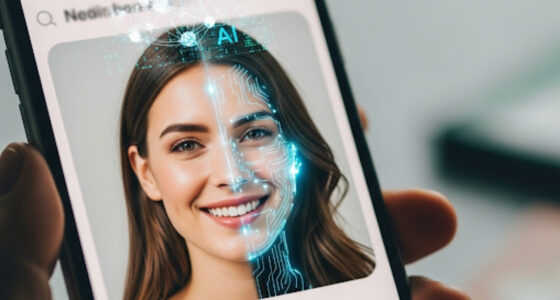The enterprise AI revolution just hit a massive acceleration point. KPMG’s latest quarterly survey of over 130 executives at billion-dollar companies reveals something remarkable: full AI agent deployments jumped from 10% to 33% of organizations in just three months. We’re not talking about small startups experimenting anymore. These are billion-dollar enterprises moving AI agents from pilot programs into actual production at unprecedented speed. What’s driving this sudden shift involves everything from scaled AI literacy to new ROI measurement frameworks that executives can finally quantify. But the headline numbers only scratch the surface of what’s actually happening inside these organizations.

The Numbers Behind the Enterprise AI Explosion
KPMG tracked over 130 C-suite leaders at U.S. companies with $1B+ in revenue across consecutive quarters, creating a longitudinal view of how actual decision-makers are behaving rather than just capturing snapshots of industry sentiment.
When you look past the headline 300% growth figure, the raw survey data reveals something much more significant than typical AI adoption metrics. These aren’t mid-market companies testing new technologies or startups making bold claims about AI adoption. We’re looking at the largest enterprises in America, the ones that typically move slowly and deliberately when implementing new technologies across their organizations.
The contrast with earlier quarterly surveys shows just how dramatic this shift has been. In the first quarter of 2024, organizations were still grappling with basic questions around AI assistant tools. The percentage of workers using knowledge assistance daily jumped from 22% to 58% between Q4 2023 and Q1 2024, suggesting that basic AI tools had become commonplace but sophisticated implementations were still rare.
The pilot program statistics tell the most interesting story. In Q1 2024, 65% of these billion-dollar companies were piloting AI agents, meaning they were running small-scale tests and experiments to understand the technology’s potential. The typical enterprise approach was cautious experimentation with limited scope and minimal business impact. By Q2 2024, the percentage of organizations still in pilot mode had actually decreased to 57%, but this decline was due to conversion into full deployments, not waning interest.
Full deployment in enterprise contexts means something entirely different from experimental usage. When these companies report full deployments, they’re describing AI agents that are integrated into core business processes, handling real customer interactions, making autonomous decisions within defined parameters, and operating at scale across multiple departments. This isn’t about running a chatbot for internal help desk tickets or automating simple data entry tasks.
The most significant statistic from the survey is that 90% of organizations are now past the experimentation stage entirely. This means the vast majority of major enterprises have moved beyond asking whether AI agents work and are now focused on optimizing how they work.
This timeline compression challenges conventional wisdom about enterprise technology adoption. Typically, major corporations take years to move from pilot programs to full deployment of new technologies. The three-month acceleration from Q1 to Q2 2024 suggests that external pressures or internal confidence reached a tipping point that forced rapid decision-making.
The survey data reveals that this isn’t just about technology adoption but represents a fundamental shift in how enterprises view AI as business infrastructure. Companies are no longer treating AI agents as experimental tools or productivity enhancers. They’re implementing them as core business capabilities that enable new operational models and competitive advantages. The speed of this transformation raises an obvious question about what forces converged to create such unprecedented acceleration.
What’s Actually Driving This Sudden Acceleration
Three primary forces converged to create this unprecedented acceleration in enterprise AI agent deployment, each amplifying the others in ways that compressed typical adoption timelines from years into months.
The most significant shift involves how executives now view ROI measurement around AI investments. Early in 2024, companies were theoretically committed to AI but practically paralyzed by uncertainty about how to quantify returns. The shift from ROI uncertainty to measurable business outcomes happened when AI assistant tools matured enough to provide concrete data points. Executives could finally point to specific productivity gains, cost reductions, and revenue impacts that justified larger investments in more sophisticated agent deployments.
The widespread adoption of AI assistant tools created an unexpected foundation for this acceleration. When daily usage of knowledge assistance tools jumped from 22% to 58% between Q4 2023 and Q1 2024, it established baseline AI literacy across enterprise workforces. Employees already understood how to interact with AI systems, making the transition to more complex agentic workflows significantly smoother than anticipated. This eliminated the typical learning curve that slows enterprise technology adoption and reduced workforce resistance as employees experienced positive interactions with AI tools.
Competitive pressure among billion-dollar companies became the critical accelerant that transformed gradual adoption into urgent deployment. Early adopters who successfully deployed AI agents began demonstrating measurable advantages in efficiency and revenue generation. Other companies found themselves forced to accelerate their own timelines to avoid falling behind. This created a domino effect where successful implementations encouraged rapid adoption across entire industries rather than gradual market penetration. Industry conferences and business publications amplified these success stories, creating additional pressure to implement similar capabilities.
Executive mindset shifted from viewing AI primarily as a cost-cutting measure to recognizing it as a revenue generation opportunity. Nearly half of surveyed enterprises now focus equally on efficiency and revenue growth, while 36% are exploring new revenue opportunities alongside efficiency gains. This dual focus created urgency around deployment because companies recognized that AI agents could create new business capabilities rather than just optimize existing processes.
The availability of more user-friendly platforms and tools eliminated many of the technical skills gaps that previously slowed deployment timelines. Companies could move from pilot to production faster because the underlying technology stack had become more accessible to their existing teams.
As Steve Chase of KPMG puts it: “AI agents are moving out of pilots and into production—and that momentum will only accelerate.” This convergence of measurable ROI, workforce readiness, and competitive necessity created conditions where companies both could and felt compelled to deploy AI agents at unprecedented speed.
The acceleration reveals something crucial about what these enterprises are actually building with their newfound confidence in AI agents.
Beyond Chatbots: The Sophisticated Agent Use Cases Taking Over
These enterprises are deploying sophisticated agentic workflows that go far beyond the simple chatbots and basic automation tools that dominated early AI implementations. The distinction between AI assistants and sophisticated agents represents a fundamental difference in capability and business impact. While AI assistants respond to queries and provide information, the agents now entering production can execute complex multi-step processes, make decisions within defined parameters, and integrate across multiple business systems without constant human supervision.
Financial services companies are deploying agents that handle entire loan approval processes, analyzing credit histories, verifying documentation, and making approval decisions within preset risk parameters. These agents don’t just speed up existing processes but enable 24-hour loan processing capabilities that weren’t previously possible. The retail sector shows particularly sophisticated implementations where agents manage dynamic pricing across thousands of products, adjusting prices in real-time based on competitor analysis, inventory levels, and demand patterns. These agents operate continuously, making pricing decisions that would require entire teams of analysts working around the clock. This dynamic pricing capability exemplifies how enterprises are combining efficiency gains with revenue growth opportunities, addressing both priorities simultaneously.
Healthcare organizations are implementing agents that manage patient scheduling, insurance verification, and treatment protocol recommendations, creating seamless coordination between different departments and external providers. Manufacturing companies are using agents to optimize supply chain decisions, automatically adjusting procurement schedules based on demand forecasts, inventory levels, and supplier performance metrics.
The shift toward revenue-generating applications represents a fundamental change in how enterprises view AI deployment. Agents are being designed to create new business capabilities rather than just optimize existing operations. Integration into complex business processes and decision-making workflows requires agents to handle intricate tasks that span multiple departments and systems. Agents now manage customer onboarding processes that involve legal document review, compliance checks, and system provisioning across different platforms. They coordinate between sales, finance, and fulfillment systems to ensure seamless customer experiences while maintaining operational efficiency.
Some implementations use interconnected agents where different AI systems collaborate on tasks, each specialized for specific functions but able to communicate and coordinate with others. One agent might handle customer inquiry routing while another manages inventory checks and a third processes payment authorization.
Rather than simply eliminating positions, these deployments are changing job roles in fundamental ways. Customer service representatives now focus on complex problem-solving while agents handle routine inquiries. Financial analysts spend time on strategic planning while agents manage data collection and preliminary analysis. Sales teams concentrate on relationship building while agents handle lead qualification and initial customer interactions.
The most successful deployments are creating entirely new business capabilities rather than just automating existing processes, enabling companies to offer services and operate in ways that weren’t previously feasible. This transformation is creating ripple effects that extend far beyond individual organizations.
The Workforce and Competitive Landscape Transformation
Companies are discovering that successful AI agent deployment requires fundamental changes in how they manage their workforce and compete in their markets. Over four in five leaders now view agents as “valued teammates and contributors” rather than replacement tools, representing a shift in executive thinking that shapes how organizations approach human-agent collaboration.
This collaborative mindset drives comprehensive employee preparation strategies. With 87% of leaders acknowledging that AI agents will prompt organizations to upskill employees in roles that will be displaced, companies are implementing two primary training approaches. Skill building initiatives focus on teaching prompt skills to maximize agent effectiveness, with 69% of organizations prioritizing this capability, while also developing role-specific guidelines for effective agent collaboration. Hands-on practice programs include creating agent-specific sandbox environments where employees can practice working with AI systems without affecting production workflows, implemented by 49% of companies, and AI agent shadowing programs that provide structured learning experiences, used by 41% of organizations.
The workforce transformation challenges conventional assumptions about AI replacing human workers. Instead of eliminating positions, successful deployments are changing job roles in fundamental ways. Workers are learning to leverage AI capabilities while focusing on tasks that require human judgment, creativity, and relationship management. This emphasis on collaboration rather than replacement changes how employees approach their roles and career development.
Performance evaluation methods are evolving as leaders expect traditional metrics focused on individual task completion and output volumes to become less relevant. New approaches emphasize collaboration effectiveness between humans and AI agents, quality of outcomes, and the ability to leverage AI tools strategically. This evolution affects compensation structures, career progression paths, and how companies measure productivity across different departments.
The competitive implications extend beyond individual organizations, with 82% of leaders believing their industry’s competitive landscape will look different within 24 months. This timeline suggests companies view AI agent deployment as a fundamental disruption that will separate winners from losers rather than a gradual evolution. Organizations that successfully integrate agents into their operations gain advantages in efficiency, customer service, and innovation speed that traditional competitors cannot match.
Real-world impact is already visible at major corporations. Salesforce CEO Mark Benioff recently noted that AI is handling 30 to 50% of the work at Salesforce, including roles in software engineering and customer service, with their customer service agents reaching 93% accuracy. This demonstrates the tangible productivity gains possible when AI agents are integrated effectively into core business operations.
Cultural transformation requires changing fundamental assumptions about work processes and team dynamics. Companies are fostering environments where employees view AI agents as collaborative partners rather than competitive threats, requiring leadership commitment and systematic change management approaches.
The transformation is creating a new category of competitive advantage where agent-enabled organizations will fundamentally outperform traditional competitors through enhanced operational capabilities and innovative business models. This shift suggests we’re witnessing something much larger than a typical technology adoption cycle.
Conclusion
The data confirms that enterprise AI has crossed a critical threshold. This 300% growth in AI agent deployments represents the beginning of enterprise AI’s mainstream adoption phase, not just a temporary surge. The shift from 10% to 33% of billion-dollar companies having full deployments signals that we’re witnessing the transition from AI as an experimental technology to AI as essential business infrastructure. These billion-dollar enterprises have moved past asking whether AI agents work and are now focused on optimizing how they work at scale.
The transformation will likely face different challenges as it reaches smaller companies that lack the resources and technical expertise of these enterprise giants, including skills gaps and budget constraints.
If you found this breakdown useful, like and subscribe for more insights on AI in business.









